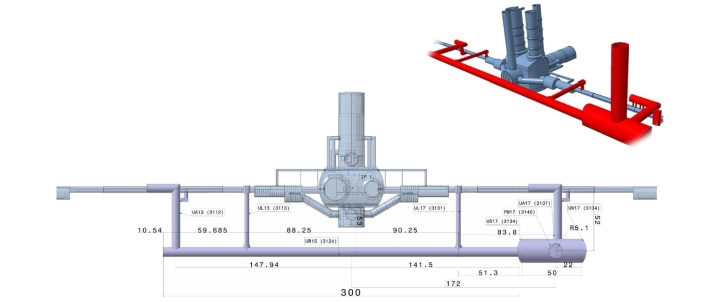CERN: Design of Underground Structures for High Luminosity LHC Project at Point 1
Client
CERN
Location
Geneve, Switzerland
Status
In progress
Services
Design of Underground Structures for the Joint Venture Rocksoil S.p.A.(Italy), Setec (France) e CSD Engineers (Switzerland).
Technical Information
Access Shaft: 55 m depth, 12 m diameter
Cryogenic cavern size: 51m x 18m x 20m
Long power converter tunnel: 300m length, 6m diameter
4 service tunnels: 200m total length, 3m diameter
The Large Hadron Collider (LHC) is the most recent and powerful accelerator constructed on the CERN site. The LHC machine accelerates and collides proton beams but also heavier ions up to lead. It is installed in a 27 km circumference tunnel, about 100 m underground. The LHC design is based on superconducting twin-aperture magnets which operate in a superfluid helium bath at a temperature of 1.9 K.
The existing infrastructure and civil engineering for the LHC consists of a 27 km circular tunnel with eight sites positioned around the tunnel’s circumference. Point 1 (ATLAS - located in Switzerland) and Point 5 (CMS- located in France) are the two largest sites. The underground structures required at each point consist of a new shaft, a cryogenics cavern, radio frequency and power converter caverns, service tunnels and linkage cores to the existing LHC infrastructure, principally in weak sedimentary rock (molasse).
The High-Luminosity LHC, which is expected to be operational after 2025, will increase the LHC’s luminosity by a factor of 10. To achieve this major upgrade, scientists and engineers are optimizing all of the collider’s parameters. Several technologies, some of which are completely innovative, are being developed.


